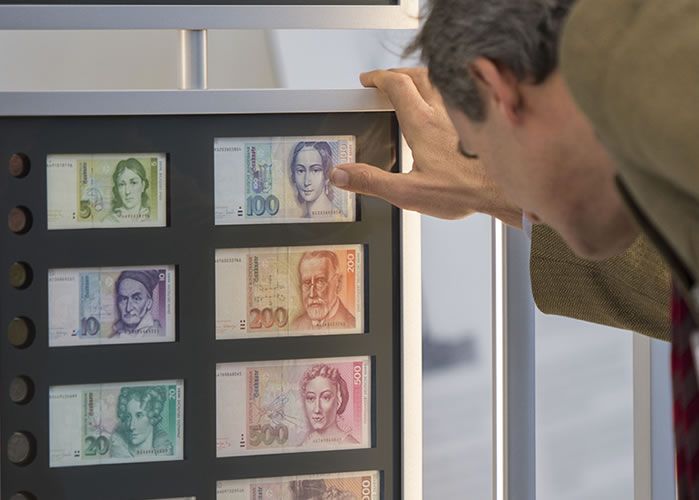EUR/USD Outlook: Tide May be Turning Against Euro on Monetary Divergence

The price chart of EUR/USD supports the idea that the tide may be turning back in favour of the Dollar as the pair appears to have completed its correction of the broader downtrend and posted a very bearish ‘three black crows’ Japanese candlestick pattern after rolling over.
This pattern consists of three relatively long down days in a row after a top and is a bearish trend reversal signal. In this case its significance is heightened by the fact that it has come after the completion of a three-wave corrective pattern or ‘measured move’ from off the January lows.
This combination of technical indicators on a chart provide a relatively high probability (66%) that the exchange rate will now continue falling, at least 300 points, according to research.
Therefore, we expect further downside to the trendline at 1.0580 initially, followed by a continuation down to 1.0400 if the trendline was broken, with confirmation coming from a move below 1.0550.

"EUR/USD extensively tested the topside of the MT range, but the test was rejected last week," says Piet Lammens at KBC Markets. "We have the impression that the dollar needs very strong data to gain more short-term. We maintain a cautious EUR/USD negative bias, but the decline might slow compared to last week’s pace."
The rally in the Euro to Dollar exchange rate (EUR/USD) came to an end on Friday, March 31 after Eurozone inflation date came out below expectations and signalled price rises might have peaked.
Headline inflation, which includes volatile Food and Fuel components, slowed to 1.5% in March compared to the 2.0% registered in the previous month.
The more important Core Inflation gauge meanwhile fell to 0.7% from 0.9% - a devastating blow to those who may have thought prices were once again starting to pick up backed up by greater growth in the region.
The data indicates the European Central Bank (ECB) is unlikely now to reduce its money-printing QE programme sooner than scheduled and that interest rates will stay low for a goodly long period of time.
Both these outcomes put pressure on the Euro as low interest rates attract less inflows from yield-hungry international investors and QE increases the supply of euros in the system.
The Dollar did not have an excellent week itself, also witnessing weak data on Friday in the form of slowing income and consumption numbers but whilst the
Eurozone data undermined an improving outlook for monetary policy, the US data failed to dent expectations that the Federal Reserve will continue raising interest rates at a similar pace to the current rate.
“Nonetheless, the dollar’s value against other currencies tends to be driven by expectations for the relative stances of monetary policy in the US and elsewhere, not their prevailing stances. And our view remains that the Fed will tighten policy by more than investors are anticipating, while other major central banks keep policy about as loose, or looser, than discounted in the markets,” says John Higgins at Capital Economics.
With this in mind it is possible to conclude that the tide may now have turned back in favour of the Dollar, at least in the case of the EUR/USD pair, as the two monetary policies diverge even more widely than before.
Forthcoming Data for the Euro
Eurozone Purchasing Manager survey data for March will be published on Monday and Wednesday with analysts’ expectations that Eurozone Manufacturing PMI will come out at 56.2 – the same as before - and Services PMI will come out at 56.5.
Monday will see the significant Eurozone Unemployment rate for March published as well, with forecasts expecting a slight drop to 9.5%.
Retail Sales is the other major data release for the region. It is out on Tuesday, April 4 at 10.00 and s forecast to show a 0.5% rise in March from the previous month’s -0.1%.
February Retail Sales data presented a varied picture across Euro-land, with German Sales rising by 1.8% but French and Spanish data disappointing.
Data is likely to be positive in the week ahead according to Capital Economic’s economist Jessica Hinds.
“This week is likely to bring more good news for the eurozone economy, with retail sales (Tuesday) set to have risen and the unemployment rate (Monday) to have fallen further in February. We also expect national industrial production data for the same month to show monthly rises in Germany, France and Spain. But we still think that the latest ECB minutes (Thursday) will reveal a strong commitment to its asset purchase plans,” said Hinds.
Data for the Dollar
The main releases for the Dollar in the week ahead are ISM Manufacturing on Monday at 15.00 GMT, the FOMC meeting minutes at 19.00 on Wednesday and Non-Farm Payrolls at 13.30 on Friday.
Due to the weakness of the income and consumption data out on Friday, there is a pressure on the coming week’s releases to be in tip-top order, says Kathy Lien of BK Asset Management, or the Dollar could witness downside.
“If the minutes confirm that the Fed is in no rush to raise interest rates again, the Dollar could retreat. But if they contain a general tone of optimism we could see 113 in USD/JPY. With that in mind, NFP is the most important piece of data to watch because economists are looking for slower job growth. If they are right, it could be the nail in the coffin for the Dollar, leading to lower trading in the next few weeks,” said Lien.










